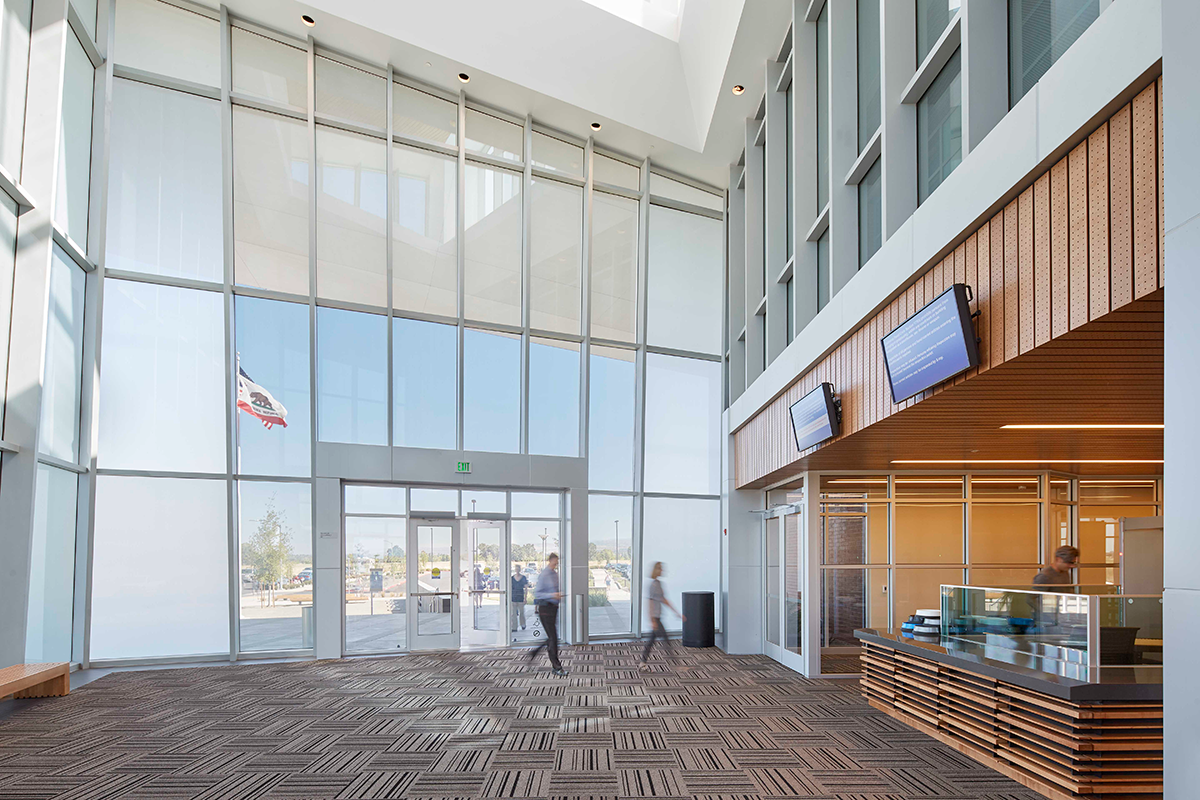The Role of Steel in Transforming Curtain Wall Design
David Vermeulen, North America Sales Director, Technical Glass Products

The evolution of steel, from the groundbreaking “Bessemer process” in 1856 to cutting-edge European technologies, has greatly transformed the possibilities for steel curtain wall design. After the Bessemer process made mass-producing steel possible, the hardworking material began appearing in commercial buildings. Despite steel’s strength, early applications were limited due to its weight and susceptibility to rusting. This led to its eventual replacement by aluminum, a lightweight material valued for its versatility in forming various mullion profiles.
Today, technological advances in steel manufacturing have overcome these earlier challenges. Fabricators now employ strategies to reduce steel’s vulnerability to corrosion and capitalize on its strength. Consequently, frames for steel curtain wall designs are available in lengths and shapes previously impossible with other methods. The combination of technology and material properties is central to how steel enhances curtain wall designs.
What makes steel ideal for large curtain walls?
With a modulus of elasticity of 29 million psi (compared to aluminum at 10 million psi), steel offers a number of physical strength advantages. Steel-framed curtain walls can handle larger loads and significantly greater free spans than aluminum assemblies. Its strength can also translate to smaller system shapes without a decrease in performance. Furthermore, steel can also span larger heights without the need for reinforcing or more frequent connections to the building. In fact, steel curtain walls can contribute continuous mullions up to 40 feet (ft) (12 meters (m)) free spans in a single member without splicing; longer spans are possible but require more coordination. That said, steel’s strength is only one part of the equation.
To sideline concerns about corrosion and enhance durability, today’s steel framing is combined with innovative weather sealing and moisture protection technologies. In particular, when fabricated with continuous gasketing across the face of all framing members, the system completely isolates the steel from coming into contact with water in the glazing pocket to preserve its integrity. Manufacturers also provide high anti-corrosion protections, such as double-sided pre-galvanization, which is coated with a durable primer and finished with color to enhance weather protection. With these improvements, design teams can confidently incorporate steel into large curtain wall designs, ensuring both structural integrity and aesthetic appeal for years to come.
How does steel enhance curtain wall design?
Steel’s ability to span greater dimensions also enables more design freedom. Since the material is nearly three times stiffer than aluminum, it better resists deformation and deflection under wind and other loads. This enables framing profiles in steel curtain wall design to be significantly narrower in width and depth than aluminum’s for the same load specifications. In fact, a steel frame could potentially be 25-50 percent smaller than that of an aluminum framing system in similar load conditions.
Additionally, advanced steel manufacturing allows back mullions in different shapes and sizes. For example, since manufacturers can now produce steel frames in long lengths and various complex shapes, design teams can select from hollow-, I-, T-, U- and L-shaped mullions or custom profiles. Another option is to use the veneer connector to attach the curtain wall to glued-laminated (glulam) beams, I-beams, or round steel tubes, among other structural members.
In outcome, steel’s ability to span larger distances in lean profiles allows design teams to create façade with larger uninterrupted glazing areas and push curtain wall design to near transparency.
Can steel frames support energy performance objectives?
While durability and design flexibility remain crucial considerations, today's projects often prioritize meeting energy efficiency and performance standards. Consequently, design teams require double- or triple-glazed systems to fulfill these objectives. However, these high-performing systems are heavier due to the weight of the added lites. As a result, it is difficult for conventional framing material to support the increased load without requiring bulkier profiles or reducing glazing areas. A larger volume of framing material might also contribute to heat conduction and detract from the original design intent.
Here, too, steel curtain walls can solve present-day challenges. Due to steel’s strength, it can provide the necessary support for heavy double- or triple-glazed units. Depending on product selection, some steel curtain walls can support glazing infills up to 76 mm (3 in.) thick and total weights of up to 25-30 pounds per square foot, exceeding the typical thickness and weight of triple-glazed units.
Moreover, steel’s thermal conductivity is 74 percent less than aluminum's. Limiting heat transfer, modern steel frames can also make curtain walls without a traditional thermal brake possible. This reduces the amount of metal needed to support the glazing—less metal translates to a limited pathway for heat conduction. Consequently, design teams can meet a building’s performance goals without compromising their creative vision.
Steel brings the best out of curtain wall designs
As a curtain wall framing material, steel is a versatile choice that allows design teams to dissolve boundaries, maximize daylight penetration and frame uninterrupted views to enhance occupant experience—all while elevating building performance. One excellent example of steel’s benefits in action is the Butte County Courthouse, Chico, California. In this project, the innovative use of sleek steel frames in curtain walls helped the architects achieve a building that not only meets functional needs but also elevates the standards for design in public buildings.
Windom Kimsey, design principal and president of TSK Architects explains, “We wanted the curtain wall to taper in from all corners like the buttes. But it was important they do so without obtrusive frame profiles blocking daylight and detracting from the building’s modern aesthetic.” He added, “TGP’s steel curtain wall system made it possible for us to meet the project’s unique geometrical needs without compromising on appearance.”
Learn more about TGP’s SteelBuilt Curtainwall Infinity™ System used in the project.



 David Vermeulen is the North America Sales Director at Technical Glass Products (TGP), a division of Allegion that supplies fire-rated glass and framing systems, and other specialty architectural glazing.
David Vermeulen is the North America Sales Director at Technical Glass Products (TGP), a division of Allegion that supplies fire-rated glass and framing systems, and other specialty architectural glazing.